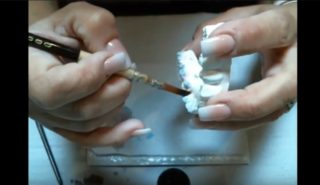
Your spring cleaning may be long over, but that doesn’t mean that reducing waste in your lab should leave your mind. You spend all day in your work space and could be losing profit due to the layout or set up of your lab.
By keeping lean manufacturing processes at the top of your mind, you and your lab can greatly benefit. What exactly is lean manufacturing? It’s defined as a systematic method to eliminate waste within a labor-intensive manufacturing system. Why is it so important? Lean manufacturing your lab results in improved efficiency, reduced in-house remakes, and increased profits. It helps continuously improve on eliminating every wasted step in any process your lab has set in place. Going lean means you are offering your customers the highest quality product because you are constantly looking to improve your manufacturing.
So where should you start?
Remove all clutter from your area. Follow the acronym DOWNTIME to eliminate the 8 different types of wastes that exist:
- Defects
- Overproduction
- Waiting
- Non-utilized talent
- Transportation
- Inventory
- Motion
- Extra-processing
Declutter Method 1: The red tagging method.
Tags that are daily mean that these are items you use every day and should be out and ready to use immediately. Weekly tags are for items that are used once every week or two and should be in a drawer or set aside out of the way. Monthly tags are for items that are used only once a month or infrequently and should be put out of the way. Less than monthly tags are for all other items that have not been used in the past month or just used once and should be removed entirely by selling, recycling or throwing them away. You may find that adding organization tools like a foam tool organizer or zirconia disc organizer eliminates clutter in your work area.
Declutter Method 2: Reduce the distance pans travel from start to finish.
Map out your lab and draw a dotted line to show the path your pans enter the building to when it exits the building. This method is sometimes referred to as creating a spaghetti map because you’ll probably find that cases travel the same space several times. Reducing the footsteps will result in time and money saved, increased production and thus, increased sales.
When your work environment is clean and organized, your staff will feel more positive about the work they’re producing. You should empower your employees to adopt lean by including them in ideas on how to fix errors and implement the changes. Going lean means adopting lean as part of your lab’s culture and expectations. Every department and staff member from the top down should be adopting it. Respect for one another is a large pillar of lean. A company’s goals, plans and results should be communicated among all team members and management should be asking questions in a form of mentoring so that staff members can decide for themselves what’s best and can fulfill their capabilities.
Everyone must understand that going lean is a long-term commitment. Every single department should have standard work and the business should always be looking at their customer’s needs for today and tomorrow while continuing to adapt to changes in needs and the industry (Baker 2017).
Thanks for reading,
The Zirlux Team
Baker, Bill. “So What is “Lean” Anyway?” 4 Questions to Test Your Lean Transformation | Lean Fundamentals. Industry Week, 18 Jan. 2017. Web. http://www.industryweek.com/lean-six-sigma/so-what-lean-anyway>.



